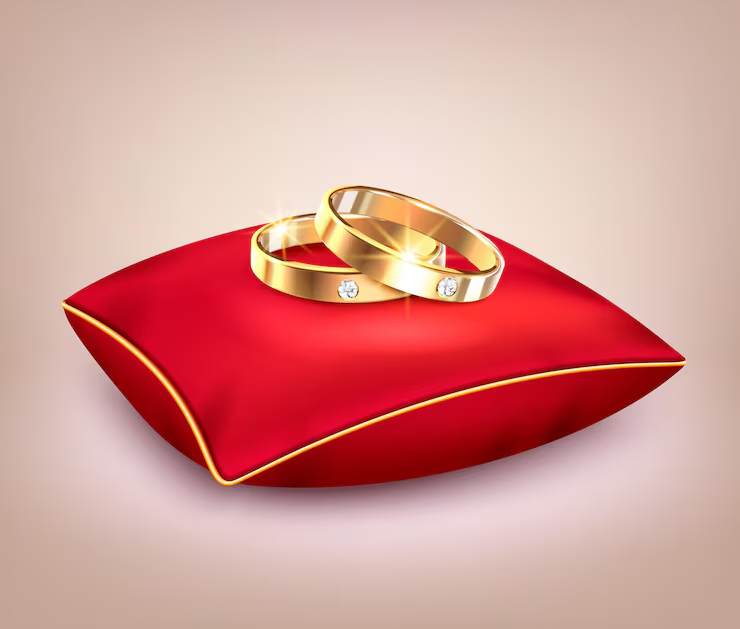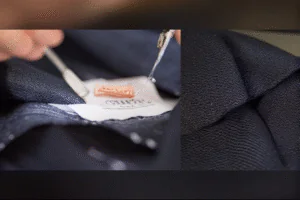
Inlays in Men’s Wedding Bands
Are you ready to break away from traditional plain bands and embrace a wedding ring that truly reflects your unique style? Inlays in men’s wedding bands offer just that—a chance to wear a ring as individual as you are. From the earthy warmth of wood to the cosmic allure of meteorite, inlays transform a simple band into a personal masterpiece. They’re not just jewelry; they’re a statement of who you are and what you value.
In this in-depth guide, we explore the world of inlays in men’s wedding bands. You’ll learn what inlays are, the various types available, why they’re surging in popularity, how to choose the perfect inlay for your lifestyle, and essential care tips to keep your ring looking pristine. Whether you’re starting your search or ready to buy, this article equips you with everything you need to make an informed choice. Let’s dive into the art and craft of inlaid wedding bands.
What Are Inlays in Men’s Wedding Bands?
Inlays in men’s wedding bands are decorative materials embedded into the ring, typically along the center or edges. These can include wood, stone, metal, carbon fiber, or exotic materials like meteorite or dinosaur bone. Inlays add texture, color, and personal meaning, setting them apart from traditional plain bands. They transform a ring into a unique symbol of commitment.
Historically, wedding bands were simple, often worn only by women. However, during World War II, men began wearing rings to stay connected to their partners, sparking a trend that evolved into today’s diverse designs. Inlays have become a modern favorite, allowing men to express individuality through materials that resonate with their passions, such as nature or adventure.
Types of Inlays in Men’s Wedding Bands
Inlays come in various styles and materials, each offering a distinct aesthetic. Below, we outline the most popular types and materials, drawing from expert designs at jewelers like Rustic & Main.
Center Inlay
A center inlay runs through the middle of the ring, bisecting the primary material. For instance, a tungsten band with a koa wood center inlay blends modern durability with natural warmth. This balanced design suits those who want a harmonious mix of materials, offering a sleek yet striking look.
Offset Inlay
Offset inlays sit closer to one edge, creating an asymmetrical effect. A teak wood ring with an offset gold inlay, for example, combines rustic charm with a touch of elegance. This style appeals to those who prefer a bold, unconventional design that stands out without being overly complex.
Custom Edge
Custom edge inlays feature an offset strip separating the main material from a smaller edge inlay. A whiskey barrel wood ring with an elk antler edge and offset gold inlay is a popular choice. This design is ideal for nature enthusiasts, offering a textured, story-rich ring that feels adventurous.
Half & Half
Half & half inlays use two materials separated by a centered inlay. A ring crafted from Springfield 1903 rifle stock wood and WWI uniform wool, divided by a silver inlay, tells a historical tale. This style suits those who want to honor heritage or incorporate deeply personal materials.
Three Inlay
Three inlay designs feature a center inlay flanked by two offset inlays for a complex, layered look. An antique walnut wood ring with elk antler and double rose gold inlays is a stunning example. This intricate style is perfect for those who appreciate detailed craftsmanship and bold aesthetics.
Popular Inlay Materials
Inlays can be made from a variety of materials, each with unique characteristics:
| Material | Description | Best For |
|---|---|---|
| Wood | Koa, walnut, teak, or whiskey barrel wood; adds earthy, natural warmth. | Nature lovers, eco-conscious. |
| Stone | Opal, sapphire, or crushed gemstones; offers vibrant color and luxury. | Those seeking bold elegance. |
| Metal | Gold, silver, or Damascus steel; provides classic durability and shine. | Traditionalists, minimalists. |
| Carbon Fiber | Lightweight, durable, with a high-tech pattern. | Active individuals, modernists. |
| Exotic Materials | Meteorite, dinosaur bone, or antler; unique and conversation-starting. | Adventurers, unique personalities |
Each material allows you to craft a ring that reflects your story, whether it’s a love for the outdoors or a fascination with the cosmos.
Why Are Inlays in Men’s Wedding Bands So Popular?
Inlays in men’s wedding bands are surging in popularity, particularly in 2025, as noted by Napoleon Bands. Crushed stone inlays, like opals, are trending for their vibrant colors and distinctive contrast against metals like tungsten. These inlays add a pop of personality, making rings stand out.
The rise in popularity stems from a cultural shift toward personalization. Men today seek wedding bands that reflect their individuality, moving beyond plain gold or silver bands. Inlays offer endless customization, from wood that evokes a favorite forest to meteorite that symbolizes a cosmic connection. Additionally, inlays can hold sentimental value, such as wood from a tree tied to a special memory, making them a meaningful choice for modern grooms.
How to Choose the Perfect Inlay for Your Wedding Band
Selecting the right inlay requires balancing style, lifestyle, and personal meaning. Here’s a step-by-step guide to help you choose:
- Define Your Style: Do you lean toward rustic wood, sleek carbon fiber, or luxurious metal inlays? Your ring should reflect your aesthetic, whether it’s rugged or refined.
- Consider Your Lifestyle: Active individuals or those who work with their hands should opt for durable materials like tungsten with carbon fiber inlays. Less durable options, like wood, suit those willing to maintain their ring.
- Evaluate Durability: Wood inlays may dry out without care, while metal or carbon fiber withstands wear better. Ensure you’re comfortable with the maintenance required.
- Seek Symbolism: Choose materials with personal significance, like wood from a meaningful tree or a stone matching your birth month.
- Match with Your Partner: If your partner has a specific ring, consider an inlay that complements it, such as a metal inlay to match a diamond setting.
- Try Before You Buy: Visit jewelers like Blue Nile to try on different styles and ensure comfort and fit.
Customization options, available at places like Manly Bands, allow you to tailor the inlay, material, and band width to create a truly unique ring.
Caring for Your Inlaid Wedding Band
Proper care ensures your inlaid wedding band remains beautiful for years. General tips apply across materials, but specific inlays require tailored attention. Here are essential guidelines:
- Regular Cleaning: Clean with a soft cloth and mild soap. Avoid harsh chemicals, which can damage inlays, as advised by Marrow Fine.
- Avoid Extreme Temperatures: Sudden temperature changes can cause materials to expand or contract, risking damage to inlays.
- Remove During Activities: Take off your ring during sports, swimming, or tool work to prevent scratches or exposure to moisture.
Material-Specific Care
| Inlay Material | Care Tips |
|---|---|
| Wood | Rub with natural finger oils or 1-2 drops of linseed/olive oil if dry. Avoid prolonged water exposure; don’t store in a box for long periods (Wedding Rings Direct). |
| Stone | Clean gently with a soft brush and mild soap. Avoid hard surfaces to prevent chipping; steer clear of ultrasonic cleaners (Brilliant Earth). |
| Metal | Use a jewelry polishing cloth for shine. Clean regularly to maintain luster; durable but still needs care. |
Following these tips, as recommended by Ken Walker Jewelers, ensures your ring’s longevity.
Cost of Inlaid Wedding Bands
The cost of inlaid wedding bands varies based on materials, design complexity, and jeweler. Simple wood inlay rings start at $200-$300, while precious metal inlays like gold can range from $500 to several thousand dollars. Exotic materials, such as meteorite or dinosaur bone, often exceed $1,000 due to their rarity and craftsmanship, as seen at Aydins Jewelry.
Set a budget and explore options at reputable jewelers like Staghead Designs to find a ring that balances style and affordability. Customization may increase costs, so discuss details with your jeweler to stay within your financial plan.
FAQs
- Are inlaid wedding bands durable?
Many inlaid bands, especially those with metal or carbon fiber, are highly durable. Wood inlays, however, require careful maintenance to avoid drying or cracking. - Can I resize an inlaid wedding band?
Resizing depends on the material. Gold bands can often be resized, but tungsten cannot. Confirm with your jeweler before purchasing. - How do I clean my inlaid wedding band?
Use a soft cloth and mild soap. Gently scrub with a soft brush for stubborn dirt, avoiding harsh chemicals or ultrasonic cleaners unless specified. - Can I wear my inlaid wedding band in the shower?
Avoid showering with wood or stone inlays, as prolonged water exposure can cause damage. Titanium or tungsten inlays may be more resistant. - Are inlaid wedding bands hypoallergenic?
Titanium and tungsten are hypoallergenic, but some woods or stones may cause reactions. Check materials if you have allergies. - What is the most popular inlay type?
Wood inlays are popular for their natural beauty, while opal inlays are trending in 2025 for their vibrant colors. - How do I choose the right inlay?
Consider your style, lifestyle, and any symbolic meaning. Try on various designs to find the perfect fit and aesthetic.
Conclusion
Inlays in men’s wedding bands offer a unique way to personalize your ring, blending style, meaning, and craftsmanship. From rustic wood to dazzling opal, there’s an inlay for every personality. By exploring types, considering your lifestyle, and following proper care, you can select a band that lasts a lifetime. Ready to find your perfect inlaid wedding band? Start browsing at trusted jewelers like Manly Bands or Blue Nile to discover a ring that tells your story. Your wedding band is more than jewelry—it’s a symbol of your commitment and individuality.

